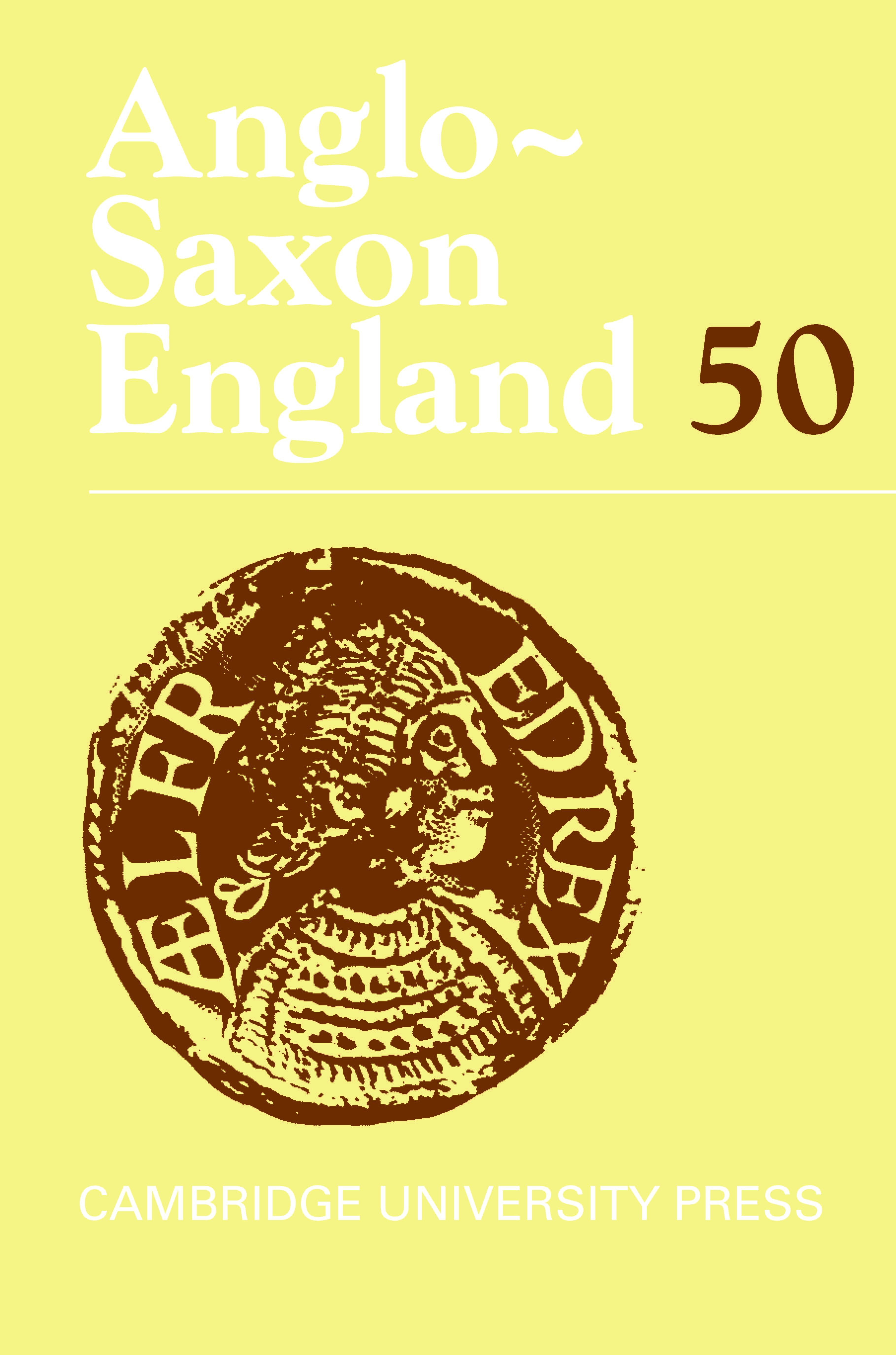A further example of an Agnus Dei penny recently surfaced at a London auction.Footnote 1 It was found in 2018 by a metal-detectorist, in south Lincolnshire. It is the twenty-second recorded example struck from Agnus Dei obverse and reverse dies, and takes the total of surviving specimens, including the two known mules with the Last Short Cross type, to twenty-four. The new coin is well preserved, without piercing, mounting or pecking, but is chipped between two and five o’clock. Both the mint, Leicester, and the moneyer, Æthelwig, are already known for the Agnus Dei type;Footnote 2 it is in fact a die-duplicate of the other known coin of Æthelwig.Footnote 3 The new coin brings the number of known examples for Leicester to four, and adds a second example for the moneyer. Allowing for the chip, the weight of 1.46g is consistent with the c. 1.75g noted for more complete examples.
LEICESTER, Æthelwig
Obv. +[Ä5E]LRÄD REX 0ÑLORVM Rev. +Ä5ELæI LEHR06E[ST]RE
Tablet: trapezoid, inscribed AG N
Weight: 1.46 g. Chipped. Illustrated as Fig. 4.
Same dies as Keynes and Naismith, ‘Agnus Dei Pennies’, no. 13.
Found in south Lincolnshire, 2018; now MacKay Collection (held at the Fitzwilliam Museum, Cambridge).

Fig. 4: New Agnus Dei-type penny from Leicester (enlarged).
Finds of Agnus Dei pennies in England are rare: including this coin, just five of the twenty-four specimens are known (or thought to be) English finds,Footnote 4 while the remaining nineteen are all certainly or probably from Scandinavia and the Baltic. The lack of piercing, mounting or pecking is consistent with an English find, since these features are characteristic of Agnus Dei pennies found in Scandinavia and the Baltic.Footnote 5 While it remains possible that the chip derives from the removal of a mount, this seems unlikely as mounted examples are often pierced to highlight the design, notably the dove, so that it appears vertical when worn in jewellery.Footnote 6 The position of the chip on this coin suggests otherwise, and is most likely to derive from damage while in the ground. Its discovery in England adds to the evidence that Agnus Dei pennies did circulate in England in the same way as others (albeit only for a brief while), and the lack of wear suggests it was lost not long after manufacture. Of the five Agnus Dei pence found in England, four are single finds,Footnote 7 while only one comes from a hoard: the mule from the Lenborough hoard.Footnote 8 This contrasts with examples found outside England, among which Agnus Dei pennies are more likely to derive from hoards (twelve examples) than occur as single finds (four). Together these points indicate that Agnus Dei pennies formed part of the currency base used for diverse purposes in England, and that they were also among the coins that passed across the North Sea in the context of trade, pillage and tribute (gafol) payments to the Scandinavians.
The Leicester mint name on the other Agnus Dei penny by the moneyer Æthelwig, a die duplicate, is partly obscured by a mount. On this new coin the ending of the mint name is clear and can now be seen to read LEHR06 ESTRE, with the final letter an E. In common with all the Leicester examples, this new coin has the trapezoidal panel below the lamb with inscription 0 è NV or 0è N, forms only found on the coins of Leicester and Stamford.Footnote 9 Similarly, the obverse uses the unabbreviated 0ÑLORVM. Both these characteristics suggest a link in die-cutting practices between the two mints. The emergence of this new die-duplicate coin does not change the known number of dies represented among Agnus Dei pennies (excluding the two mules), which amounts to twelve obverse and thirteen reverse dies: an exceptionally low total, proportionate to the number of coins. The existence of clusters of die duplicates from the mints at Malmesbury (four coins), Derby (two), Nottingham (four) and Leicester (four – two of the moneyer Ælfric and now two of Æthelwig) reinforces the conclusion that Agnus Dei was of very limited size and short duration, even if it stood at the head of an intended substantive new coinage. As well as adding a further coin to the corpus, this new example serves to reinforce the patterns already noted for the Agnus Dei coinage, although the discovery of further examples as single finds, or even a hoard, might yet change this picture.



